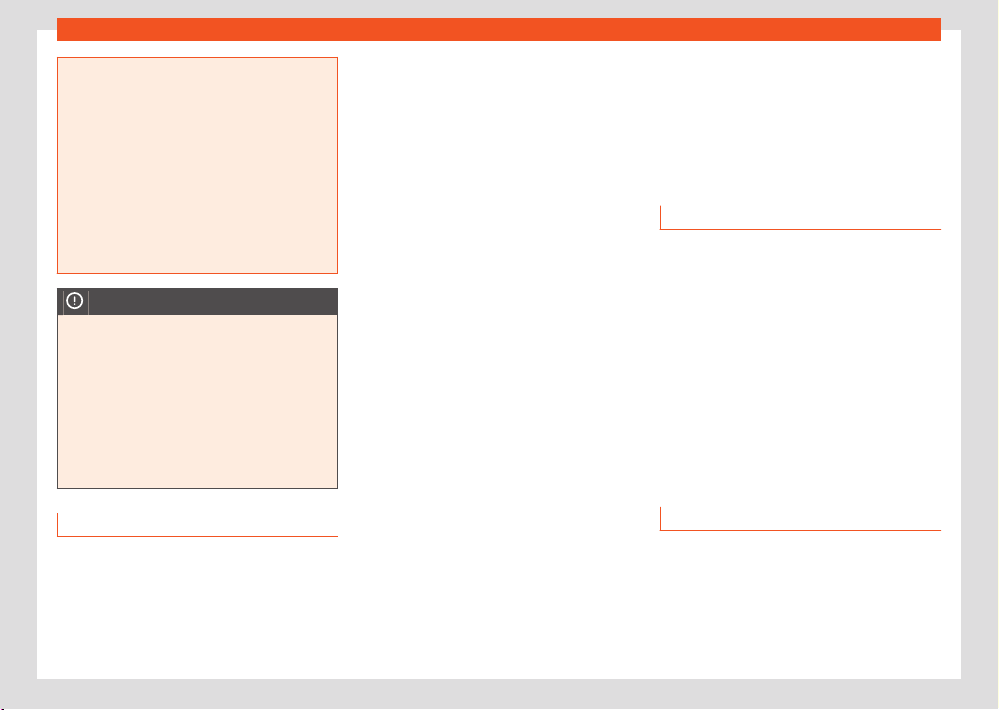Loading ...
Loading ...
Loading ...

294
Wheels and tyres
●
You should never place a body limb such as
an arm or l
eg under a raised vehicle that is
solely supported by the jack.
●
If you have to work underneath the vehicle,
you must use suitable stands additionally to
support the vehicle, there is a risk of acci-
dent!.
●
Never raise the vehicle if it is tilting to one
side or the engine is running.
●
Never start the engine when the vehicle is
raised. The vehicle may come loose from the
jack due to the engine vibrations.
NOTICE
●
The vehicle must not be raised on the
cr
ossbar. Place the jack only at the support
points provided on the strut and align it. Oth-
erwise, the vehicle may be damaged.
●
Any type of load or weight applied to the
external trim/door will (stepped on, fitting
the jack, resting heavy objects, etc.) can
cause damage to it. SEAT accepts no re-
sponsibility for any damages caused by im-
proper use of the external trim or body.
Removing and installing a wheel
Change the wheel after loosening the wheel
bolts and raising the vehicle with the jack.
When removing/fitting the wheel, the rim may
hit and damage the brake disc. For this reason,
please take care and get a second person to
assist you.
Taking o the wheel
●
Unscrew the bolts with the wheel wrench and
pl
ace them on a clean surface.
●
Remove the wheel.
Putting on the spare wheel
Check the direction of rotation of the tyre
›››page294.
●
Place the spare wheel or temporary spare
wheel into position.
●
Screw in the wheel bolts and tighten them a
little with the wheel wrench.
●
Use the appropriate adapter to tighten the
anti-theft wheel bolts.
●
Carefully lower the vehicle using the jack.
●
Use the wheel spanner to tighten all of the
wheel nuts clockwise. Tighten the bolts in diag-
onal pairs (not in a circle).
●
Put the caps, trim or full hubcap back on.
The wheel bolts should be clean and turn
easily. Before fitting the spare wheel, inspect
the wheel condition and hub mounting surfa-
ces. These surfaces must be clean before fitting
the wheel.
Tightening torque of the wheel nuts
The prescribed tightening torque for wheel
bolts for steel and alloy wheels is 120 Nm. After
changing a wheel, have the tightening torque
checked immediately with a torque wrench that
is working perfectly.
Before checking tightening torque, have any
rusty wheel bolts that are dicult to screw re-
placed and clean the wheel hub threads.
Never apply grease or oil to wheel bolts or to
the wheel hub threads. Even if the bolts have
been tightened to the prescribed torque, they
could come loose while driving.
Tyres with directional tread pattern
Tyres with directional tread pattern have been
designed to operate best when rotating in only
one direction. An arrow on the tyre sidewall in-
dicates the direction of rotation on tyres with
directional tread. Always observe the indicated
direction of rotation in order to guarantee opti-
mum grip and help avoid aquaplaning, exces-
sive noise and wear.
If the tyre is mounted in the opposite direction
of rotation, drive with extreme caution, as the
tyre is no longer being used correctly. This is
of particular importance when the road surface
is wet. Change the tyre as soon as possible or
remount it with the correct direction of rotation.
Works after changing a wheel
●
Replace the hub caps or wheel bolt caps
(depending on equipment).
●
Return all tools to their proper storing loca-
tion.
Loading ...
Loading ...
Loading ...